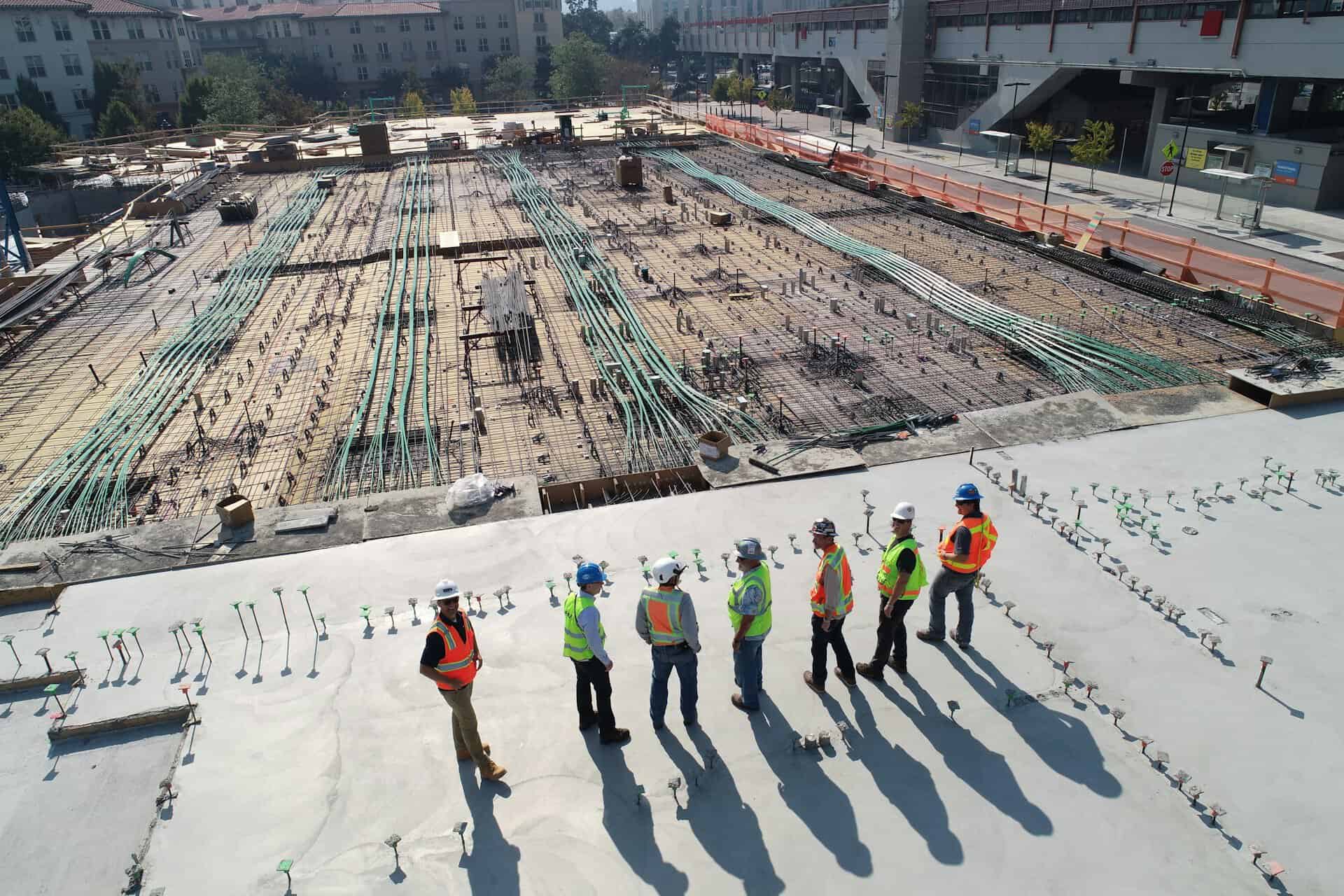When embarking on a construction project, one of the most important early decisions is selecting the type of contract to use. Construction contracts provide the legal framework for projects. They outline payment terms, responsibilities, change order processes, and more.
The specific type of contract used also significantly impacts both parties’ incentives, costs, and financial risk. Two of the most common types of construction contracts are cost-plus and fixed-price.
There are trade-offs for each approach. So, you need to choose the one that suits your circumstances the most favourably.
Here’s what you need to know about how they differ and what you should consider before deciding.
What is a Cost-Plus Contract?
A cost-plus contract is an agreement where the contractor bills the client for actual costs incurred plus an additional pre-negotiated amount for profit. With a cost-plus contract, no final price is determined for the project until after completion.
Under this contract structure, the contractor tracks all direct costs related to labour, materials, equipment, subcontractors, and other project expenses. As the work progresses, the contractor submits pay applications to the owner outlining these costs.
On top of the actual expenses, the owner also pays an agreed-upon profit margin, usually as a percentage of total costs. For example, the contract terms may specify that the contractor receives a 15% profit margin on top of reimbursed expenses.
A key aspect of cost-plus contracts is that most of the financial risk sits with the owner. Since the final price is unknown until the end, the owner takes on the risk of actual costs exceeding the budget or original expectations. The contractor is guaranteed a profit regardless of whether the budget is met.
Pros of Cost-Plus Contracts
Cost-plus contracts offer some advantages that make them appealing for certain types of construction projects:
- Flexibility to change the scope of the project: With a cost-plus contract, it is easier for owners to modify project scopes and plans, even late into construction. Since the contractor passes through true costs, changes can be accommodated more flexibly.
- Incentive for contractors to not cut corners: When contractors are guaranteed profit percentages, they have less incentive to use cheaper materials or take shortcuts that could compromise quality. Owners benefit from higher-quality construction under cost-plus agreements.
- Owners can closely monitor spending: Owners maintain close visibility into what is being spent on a weekly or monthly basis. They can request detailed expense reports from the contractor and scrutinise charges.
Cons of Cost-Plus Contracts
However, there are also several downsides inherent to cost-plus contracts that owners must consider:
- Costs can spiral out of control: Without a fixed price contract, the final cost can escalate beyond initial budgets, especially if project scopes expand and change orders pile up. Owners take on greater financial risk.
- The administrative burden on the owner: Scrutinising contractor pay applications and assessing expense reports takes time and effort. The owner must actively manage the contractor to contain costs.
- Contractors have less incentive to contain costs: Since profit percentages are baked in, contractors have less incentive to operate efficiently or minimise expenses. The financial risk sits predominantly with the owner.
What is a Fixed-Price Contract?
A firm fixed price contract, also sometimes called a lump sum contract, is an agreement where one total price covers the entire scope of work on a project. This base contract price is set from the beginning and does not change later based on actual costs or overruns.
The key aspect of a fixed price contract is a single, established price that all parties agree to upfront before work begins. Once set, this price remains constant regardless of how much time or what resources the contractor requires to complete the defined scope of work.
The contractor assumes full responsibility if expenses exceed initial projections by locking in one firm price. The owner is shielded from budget overages. Even if labour costs rise unexpectedly or material prices spike, the agreed-upon price paid to the contractor does not increase under a fixed-price contract.
In essence, fixed-price contracts shift risk away from owners and place the burden entirely on contractors to accurately estimate all costs associated with the project scope before setting a price. The contractor has strong incentives to contain expenses and operate efficiently within the constraints of that firm budget.
Pros of Fixed Price Contracts
There are some clear benefits that make fixed-price contracts advantageous for many construction projects:
- Cost certainty for owners: With a single locked-in price, owners enjoy high cost predictability and certainty around what they will pay. There is no risk of surprise overages.
- Contractors incentivised to contain costs: Contractors have strong profit motivations to find efficiencies and operate within tight budgets dictated by fixed pricing. They aggressively manage expenses.
- Less administrative burden for owner: Owners do not have to rigorously scrutinise expenses, change orders, and pay applications like they would under a cost-plus contract. Oversight requirements are reduced.
Cons of Fixed Price Contracts
As with cost-plus contracts, fixed-price contracts also pose some downsides that must be weighed:
- Less flexibility to alter project scope: Change orders under fixed price contracts can be more difficult, limited, and expensive. Owners lose some flexibility.
- Quality/creativity may suffer if contractors cut corners: To protect profits within tight budgets, contractors may use cheaper materials or take shortcuts detrimental to quality.
- Possibility of disputes over scope changes: If changes in project scope are needed, both sides may end up dissatisfied with the inflexibility of the fixed pricing. Disputes can arise over responsibility for additional costs.
Key Factors in Deciding Between Contract Types
When deciding between a cost-plus contract and a fixed-price contract, there are several important considerations that should guide the decision-making process.
One major factor is the predictability and clarity of the project scope. If specifications, plans, and expectations are very well-defined upfront, a fixed-price contract often works best since the contractor can accurately estimate total costs based on the known parameters.
However, if the project scope lacks definition and is likely to change during construction, a cost-plus contract allows more flexibility to adjust as needed.
Additionally, the owner’s financial risk tolerance is key. Owners willing to accept the possibility of actual costs exceeding budgets can utilise cost-plus contracts despite the unpredictability. Meanwhile, owners who demand strict cost certainty will push for fixed-price agreements to control expenses.
The level of trust in the contractor and the working relationship between parties can also influence contract selection. Positive, collaborative relationships make unpredictable cost-plus contracts more workable. More adversarial postures may dictate fixed pricing.
Plus, the sheer size and complexity of projects also determine suitable contract types. Larger, multi-year projects with phases require the flexibility of cost-plus contracts. In contrast, well-defined projects of limited scope can leverage fixed-price contracts even if some change orders arise.
Assessing all these dynamics allows owners and contractors to thoughtfully agree on contract structures tailored to their unique needs and circumstances.
Key Takeaways
To recap the key points in this blog comparing construction contract types:
- Cost-plus contracts offer more flexibility for changing project scopes but result in less cost certainty for owners. Fixed-price contracts provide definitive cost predictability but with less flexibility.
- When selecting the right contract, owners must weigh their risk tolerance, trust in the contractor, and the project’s size and complexity.
- Contractors benefit from guaranteed profit margins with cost-plus but must rigorously manage expenses within fixed budgets under fixed pricing.
Ready to estimate costs for your next construction project? Get a detailed breakdown with Duo Tax’s construction cost estimation services.
Contact us today to find out more.
FAQs
What Is the Difference Between a Fixed Price and a Cost-Plus Contract?
The key difference lies in how the final price is determined. With fixed-price contracts, one lump sum cost covers the entire project scope and does not change. This price is locked in upfront before work begins. In contrast, cost-plus contracts do not have a final set price.
The contractor bills the actual expenses incurred plus an additional pre-negotiated profit margin percentage. The final price is unknown until the end of a cost-plus contract.
What Are the Disadvantages of a Cost-Plus Contract?
Cost-plus contracts can lead to surging project costs beyond initial budgets since there are no constraints around a fixed price cap. Owners take on heavy financial risk and must closely scrutinise all contractor pay applications.
They also have less incentive to minimise costs and operate efficiently under open-ended cost-plus agreements with baked-in profits.
Are Cost-Plus Contracts Good?
A cost-plus building contract can be suitable for owners who are risk-tolerant about unpredictable costs and have the capacity to monitor contractor spending actively. They allow adjustments as needs evolve.
But the lack of a definitive cost ceiling puts all the risk on the owner. Fixed-price building contracts offer greater cost certainty but less flexibility. The best contract type depends on the specific project.

Ready to get started?
Talk to one of our friendly property experts to get a free quote or more Information.







